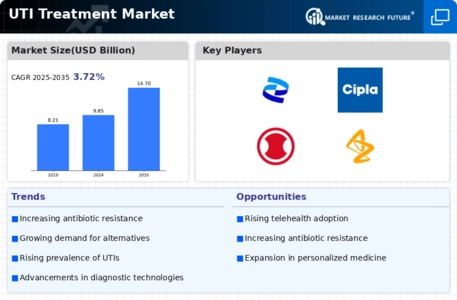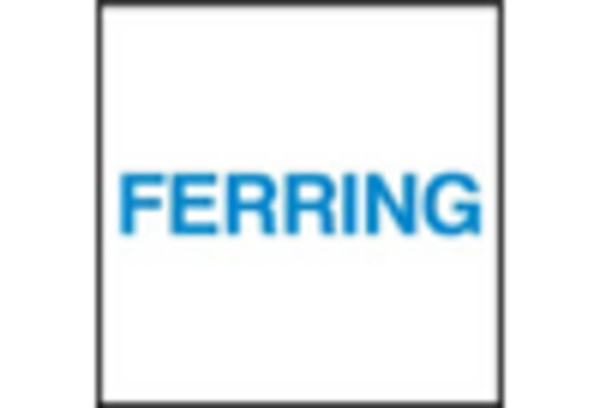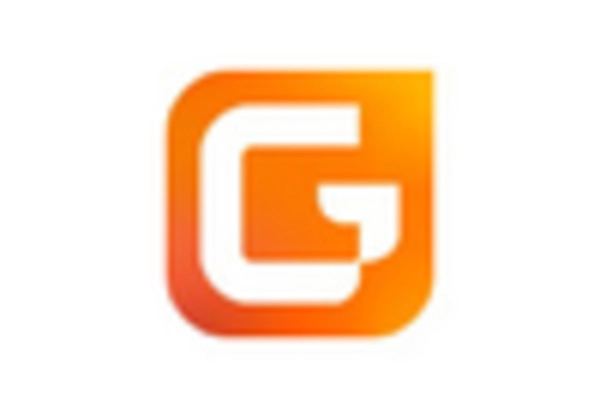The UTI treatment market is characterized by a dynamic competitive landscape, driven by increasing incidences of urinary tract infections and a growing demand for effective therapeutic solutions. Key players such as AstraZeneca (GB), Merck & Co. (US), and Pfizer (US) are strategically positioned to leverage innovation and partnerships to enhance their market presence. AstraZeneca (GB) focuses on developing novel antibiotics, while Merck & Co. (US) emphasizes expanding its portfolio through strategic acquisitions. Pfizer (US) is actively pursuing digital transformation initiatives to improve patient engagement and treatment adherence, collectively shaping a competitive environment that prioritizes innovation and patient-centric solutions.
In terms of business tactics, companies are increasingly localizing manufacturing to reduce costs and enhance supply chain efficiency. The market appears moderately fragmented, with several players vying for market share. However, the collective influence of major companies like GSK (GB) and Teva Pharmaceutical Industries (IL) is notable, as they engage in strategic collaborations to optimize their operational capabilities and expand their geographical reach.
In November 2025, AstraZeneca (GB) announced a partnership with a leading biotechnology firm to co-develop a new class of antibiotics specifically targeting resistant UTI pathogens. This strategic move is likely to enhance AstraZeneca's portfolio and position it as a leader in addressing antibiotic resistance, a growing concern in UTI treatment. The collaboration underscores the importance of innovation in combating emerging health threats.
In October 2025, Merck & Co. (US) completed the acquisition of a smaller pharmaceutical company specializing in UTI therapeutics. This acquisition is expected to bolster Merck's product offerings and accelerate its entry into niche markets, thereby enhancing its competitive edge. The integration of new technologies and expertise from the acquired firm may also facilitate the development of more effective treatment options.
In September 2025, Pfizer (US) launched a digital health platform aimed at improving patient adherence to UTI treatment regimens. This initiative reflects Pfizer's commitment to leveraging technology to enhance patient outcomes and streamline treatment processes. By integrating digital solutions, Pfizer is likely to differentiate itself in a crowded market, focusing on patient engagement as a key driver of success.
As of December 2025, current competitive trends indicate a shift towards digitalization, sustainability, and the integration of artificial intelligence in treatment protocols. Strategic alliances are increasingly shaping the landscape, enabling companies to pool resources and expertise. Looking ahead, competitive differentiation is expected to evolve, with a pronounced shift from price-based competition to a focus on innovation, technological advancements, and supply chain reliability. This transition may redefine market dynamics, emphasizing the need for companies to adapt and innovate continuously.

















Leave a Comment